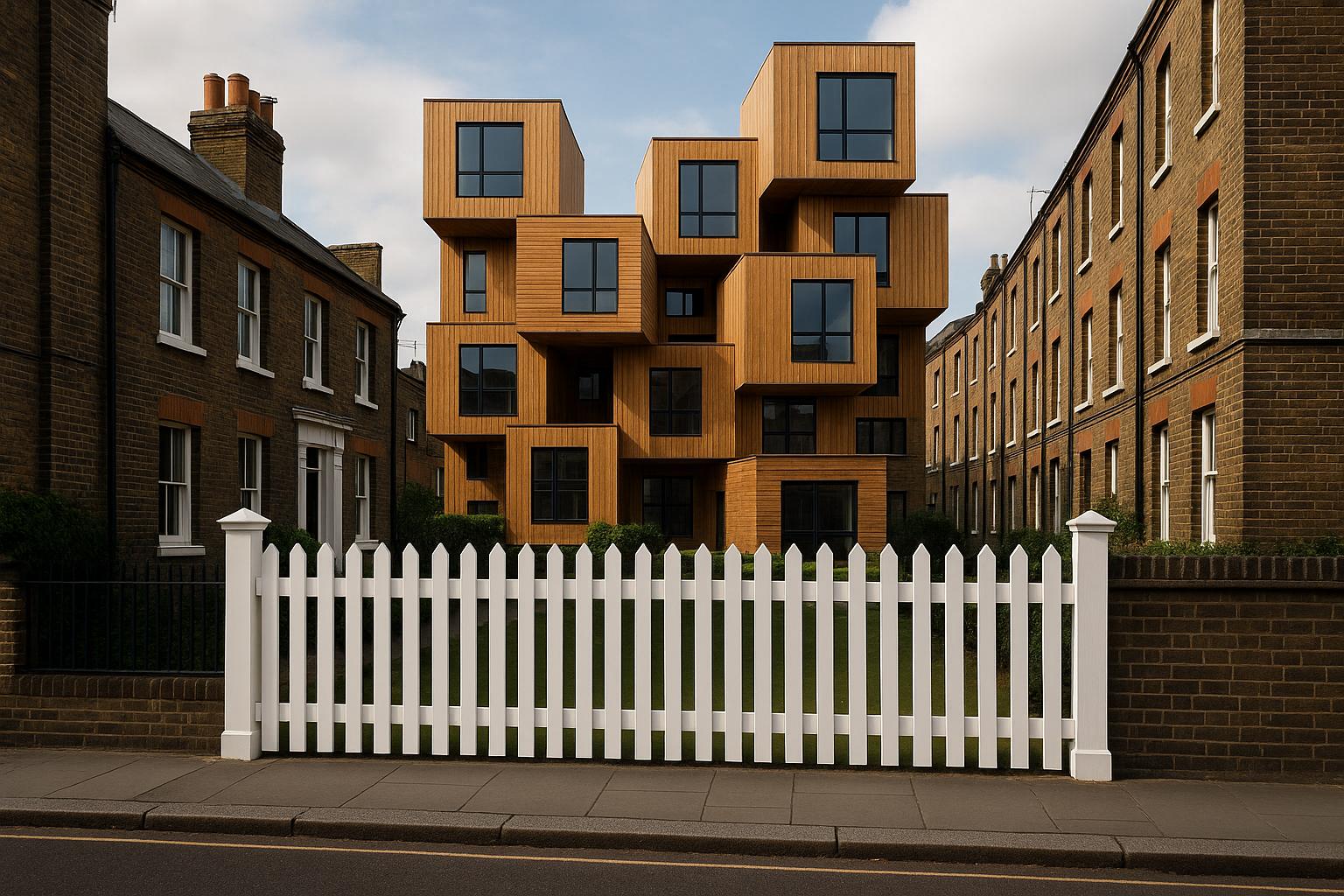In London’s suburban village of Sanderstead, Croydon, architecture studio Harp and Harp has completed a residential development known as 158 Purley Downs Road, comprising seven family homes designed to blend seamlessly with its surrounding Arts and Crafts-style neighbourhood. This project replaced a single home and its expansive garden with two separate blocks of houses, accommodating increased density while maintaining a respectful dialogue with the existing character of the area.
The design approach at 158 Purley Downs Road uses pale brickwork, red roof tiles, and distinctive pale green window frames to offer a fresh yet sympathetic take on traditional suburban architecture. The two blocks—one of three units sited where the former house stood, and another of four homes on the former garden site—are deliberately separated by car parking areas to reduce their visual impact. Harp and Harp employed techniques such as setbacks, irregular dormer window placements, and individual front doors set on side elevations to give variety and human scale to the terraces, which are intended to read more like smaller clusters of larger houses rather than uniform rows. The result is an aesthetically engaging development that fits comfortably within the existing streetscape while making efficient use of available land.
Steve Harp, the studio’s director, noted the significant opposition the project faced during its planning stages, describing organised NIMBYism that challenged the concept of suburban intensification. Nevertheless, he emphasised the urgent need for new housing in London, highlighting the current crisis and the necessity for densification strategies that are both sensitive and effective. Harp expressed hope that 158 Purley Downs Road would serve as a model for how higher-density housing can be achieved without sacrificing design quality or local character.
The genesis of this project was closely tied to the Croydon Suburban Design Guide, a Supplementary Planning Document introduced by Croydon Council in 2018 to foster higher-density development in suburban areas and help meet the borough’s ambitious housing targets. This guidance supported policies outlined in Croydon’s 2018 Local Plan and aimed to provide clear direction on site optimisation, massing, materials, and appearance for small-scale suburban developments, contributing roughly 10,000 new homes to the overall target of nearly 33,000 by 2036. The guide also considered house extensions and alterations as part of its remit. However, the initiative was met with considerable public resistance and was revoked by the council in 2022 amidst concerns about protecting local character and ensuring that new developments enhanced, rather than detracted from, existing neighbourhoods.
Despite the revocation of the Suburban Design Guide, Harp and Harp's project highlights how densification can be carried out thoughtfully. The choice of materials and details such as the “sliced” ends of the blocks with porthole-like windows reflect an intention not to replicate but to reinterpret the surrounding architectural language in a contemporary manner. Inside, the homes are arranged around central stair and bathroom cores, with living spaces facing the street and bedrooms tucked beneath steeply pitched roofs, combining practical family living with considered spatial design.
This project aligns with broader architectural trends responding to suburban densification challenges. Similar explorations include Buero Wagner’s "Houses with One Pillar," which replaced a single dwelling with two homes, or Wendover’s conversion of a former police station into rental housing in London, as well as DRDH’s use of red brickwork to impart civic character to a residential block. These examples reflect ongoing efforts to balance the pressing need for more housing with a respect for the histories, aesthetics, and community identities within suburban settings.
In sum, 158 Purley Downs Road stands as a relevant case study in suburban housing development, demonstrating that increased density need not entail homogeneous or intrusive construction. By carefully considering context, scale, and design quality, developments can contribute meaningfully to the urgent housing supply while maintaining the comfort and character prized by existing residents.
📌 Reference Map:
- Paragraph 1 – [1], [2], [5]
- Paragraph 2 – [1], [2]
- Paragraph 3 – [1], [5]
- Paragraph 4 – [1], [3], [4], [6], [7]
- Paragraph 5 – [1], [2], [5]
- Paragraph 6 – [1], [5]
- Paragraph 7 – [1], [5]
Source: Noah Wire Services
